Dominique Luchart's Blog, page 650
April 16, 2021
Why does Amazon hate its most enthusiastic smart home fans?,

 Blink’s cheap wireless cameras have seen better days.Photo by Thomas Ricker / The Verge
Blink’s cheap wireless cameras have seen better days.Photo by Thomas Ricker / The VergeBlink, the Kickstarter success bought by Amazon in 2017, has long been synonymous with inexpensive battery-powered home video cameras that don’t require a monthly contract for cloud recordings. Open-source projects like Homebridge, Home Assistant, and HOOBS have made the cameras even more extensible by allowing Blink’s temperature and motion sensors to work with smart home platforms like HomeKit and act as triggers for various automations. This combination of price and functionality led many smart home enthusiasts to buy Blink cameras in bulk for whole-home monitoring, especially those who don’t want to be beholden to a corporate overlord (and its requisite subscription fees). But instead of embracing its most passionate fans, Amazon has turned against them, threatening to terminate Blink accounts while challenging the very concept of ownership.
To set the stage, I recently set up a Raspberry Pi running Homebridge with the goal of creating a single iPhone dashboard to tie my smart home together. I started automating my home about 12 years ago, long before you could buy into complete ecosystems from Amazon, Google, and Apple. Now it’s a devil’s brew of Z-Wave and Zigbee devices, some controllable with Siri, some with Alexa, and a few with Google Assistant. It’s held together with a smattering of IFTTT recipes and four disparate hubs from Ikea, Aqara, Philips Hue, and Vera. It works, kind of, but requires several different apps, many interfaces, and lots of patience, especially from my family.
 Homebridge turns this Blink XT outdoor camera into a temperature and motion trigger for other automations in Apple’s Home app.
Homebridge turns this Blink XT outdoor camera into a temperature and motion trigger for other automations in Apple’s Home app.Over most of a weekend, I was able to configure Homebridge to link every one of my 50+ smart devices to HomeKit and each other in the Apple Home app. This allowed me to create rules that were previously impossible, like using the Blink XT camera’s motion sensor in my garden to trigger a Z-Wave siren and Hue lightbulbs at night. Nerdvana unlocked!
My sense of delight and intense pride lasted exactly one week before my Blink cameras suddenly went dead. The reason was delivered in an email from Amazon the next morning:
“My name is Tori and I am with the Blink team. While doing a routine server audit, your account was flagged and subsequently disabled due to unsupported scripts or apps running on your system. The only automation that is permitted for use with the Blink system is through Alexa and/or IFTTT. Please disable these scripts or apps and reach back out to me so that I can re-enable your account.”
After a brief WTF exchange whereby I explained that Alexa and / or IFTTT are wholly inferior to the capabilities of Homebridge, Tori helpfully directed me to the exact paragraph of the Blink Terms of Service that I had violated. Terms which, admittedly, I was now reading for the first time (emphasis mine):
“We may terminate the Agreement or restrict, suspend, or terminate your use of Blink Services at our discretion without notice at any time, including if we determine that your use violates the Agreement, is improper, substantially exceeds or differs from normal use by other users, or otherwise involves fraud or misuse of Blink Services or harms our interests or those of another user of Blink Services. If your use of Blink Services is restricted, suspended, or terminated, you may be unable to access your video clips and you will not receive any refund or any other compensation. In case of termination, Blink may immediately revoke your access to Blink Services without refund.”
It turns out that Amazon’s crackdown on Blink automators has been a known issue in the community for at least a year. My question is: why does Amazon bother?
My Homebridge integration may well be in violation of Blink’s terms and conditions, even if the terms seem unduly restrictive. But why is Amazon, owner of those massive AWS server farms that earned nearly $50 billion in 2020, resorting to such draconian measures in response to my meager deployment of five Blink cameras? I could see a crackdown on large-scale corporate installations hammering away at the Blink API, but why me and other small-time enthusiasts?
According to Colin Bendell, developer of the Blink camera plugin for Homebridge, there are at most 4,000 homes using open-source plugins like his. “Even if we round up to 10,000 users, I think this is probably small potatoes for Amazon,” says Bendell, who should know. Not only did he reverse engineer the Blink app to mimic its behavior, but the O’Reilly author and self-proclaimed IoT hobbyist is also the director of performance engineering at Shopify.
Blink could easily look the other way for small home deployments like mine without waving its rights. It says so right in the T&Cs it sent me:
“Blink’s failure to insist upon or enforce your strict compliance with this Agreement will not constitute a waiver of any of its rights.”
But that’d be a cop out. Really, Amazon should be embracing Blink hobbyists. Homebridge is, after all, a project that extends Apple HomeKit to work with a wide variety of uncertified devices including cameras and doorbells from Amazon-owned Ring. And study after study have concluded that Apple device owners love to spend money. Surely this is a community Amazon should encourage, not vilify.
At the risk of saying too much (please don’t shut me down, Amazon!), why is it that my two Ring cameras aren’t raising any red flags during “server audits”? I certainly check them more frequently as one is my doorbell. Perhaps it’s because I already pay a monthly subscription to Amazon for Ring and pay nothing to Blink. (Although sadly, even that early benefit has come to an end. As of March 18th, Amazon requires owners of newer Blink cameras to pay a subscription fee to unlock every feature.)
When I reached out to Amazon with the questions I raise above, and asked if enthusiast initiatives like Homebridge would be officially (or unofficially, wink) supported, I was given this boilerplate response:
“Blink customers can control their cameras through the Blink Home Monitor app, and customize their experience using the If This Then That (IFTTT) service. We are always looking for ways to improve the customer experience, including supporting select third-party integrations for our devices.”
Gee, thanks.
 One of Blink’s biggest advantages has come to an end.Image: Blink
One of Blink’s biggest advantages has come to an end.Image: BlinkWe kid ourselves about ownership all the time. I say I own my house, but, in fact, the bank owns more of it than I do. I listen to my music on Spotify, but those Premium playlists I’ve so carefully curated for years will be plucked from my phone just as soon as payments lapse. But somehow, Blink cameras were supposed to be different. They were for people drawn to Blink on the strength of that “no monthly contract” pitch. These were devices you were supposed to own without limitations or tithes.
How things have changed.
In 2017, Blink stood alone in the field; today there’s Wyze, Eufy, TP-Link / Kasa, Imou, and Ezviz to name just a few of the companies making inexpensive wired and wireless cameras for every smart home ecosystem, including Amazon’s, often with better features and value.
I’ve been a smart home evangelist for more than a decade, doling out advice to friends, often solicited, often not. Blink used to be an easy pitch: cheap and dead simple to install for normies, and highly extensible if you’re willing to put in the effort. But Amazon’s heavy-handed enforcement of T&Cs alongside the introduction of subscription fees have negated any advantage Blink once held over its camera competitors. While Blink sales will undoubtedly benefit from Amazon’s promotion machine, longtime Blink enthusiasts like myself will be taking their allegiances elsewhere.
The post Why does Amazon hate its most enthusiastic smart home fans?, appeared first on NEWDAWN Blog.
Five ways artificial intelligence can help space exploration, ,

This article was originally published at The Conversation. The publication contributed the article to Space.com’s Expert Voices: Op-Ed & Insights .
Deep Bandivadekar , PhD candidate at the Aerospace Centre of Excellence, University of Strathclyde
Audrey Berquand , PhD candidate in Mechanical and Aerospace Engineering, University of Strathclyde
Artificial intelligence has been making waves in recent years, enabling us to solve problems faster than traditional computing could ever allow. Recently, for example, Google’s artificial intelligence subsidiary DeepMind developed AlphaFold2, a program which solved the protein-folding problem. This is a problem which has had baffled scientists for 50 years.
Advances in AI have allowed us to make progress in all kinds of disciplines — and these are not limited to applications on this planet. From designing missions to clearing Earth’s orbit of junk, here are a few ways artificial intelligence can help us venture further in space.
Astronaut assistantsDo you remember Tars and Case, the assistant robots from the film “Interstellar?” While these robots don’t exist yet for real space missions, researchers are working towards something similar, creating intelligent assistants to help astronauts. These AI-based assistants, even though they may not look as fancy as those in the movies, could be incredibly useful to space exploration.
A recently developed virtual assistant can potentially detect any dangers in lengthy space missions such as changes in the spacecraft atmosphere — for example increased carbon dioxide — or a sensor malfunction that could be potentially harmful. It would then alert the crew with suggestions for inspection.
[image error]
CIMON will assist astronauts on the International Space Station. (Image credit: DLR)An AI assistant called Cimon was flown to the international space station (ISS) in December 2019, where it is being tested for three years. Eventually, Cimon will be used to reduce astronauts’ stress by performing tasks they ask it to do. NASA is also developing a companion for astronauts aboard the ISS, called Robonaut, which will work alongside the astronauts or take on tasks that are too risky for them.
Read more: Astronauts are experts in isolation, here’s what they can teach us
Planning a mission to Mars is not an easy task, but artificial intelligence can make it easier. New space missions traditionally rely on knowledge gathered by previous studies. However, this information can often be limited or not fully accessible.
This means the technical information flow is constrained by who can access and share it among other mission design engineers. But what if all the information from practically all previous space missions were available to anyone with authority in just a few clicks? One day there may be a smarter system — similar to Wikipedia, but with artificial intelligence that can answer complex queries with reliable and relevant information — to help with early design and planning of new space missions.
Researchers are working on the idea of a design engineering assistant to reduce the time required for initial mission design which otherwise takes many human work hours. “Daphne” is another example of an intelligent assistant for designing Earth observation satellite systems. Daphne is used by systems engineers in satellite design teams. It makes their job easier by providing access to relevant information including feedback as well as answers to specific queries.
Satellite data processingEarth observation satellites generate tremendous amounts of data. This is received by ground stations in chunks over a large period of time, and has to be pieced together before it can be analysed. While there have been some crowdsourcing projects to do basic satellite imagery analysis on a very small scale, artificial intelligence can come to our rescue for detailed satellite data analysis.
For the sheer volume of data received, AI has been very effective in processing it smartly. It’s been used to estimate heat storage in urban areas and to combine meteorological data with satellite imagery for wind speed estimation. AI has also helped with solar radiation estimation using geostationary satellite data, among many other applications.
AI for data processing can also be used for the satellites themselves. In recent research, scientists tested various AI techniques for a remote satellite health monitoring system. This is capable of analyzing data received from satellites to detect any problems, predict satellite health performance and present a visualization for informed decision making.
[image error]
AI has also been harnessed to address the problem of space junk. (Image credit: NASA)Space debrisOne of the biggest space challenges of the 21st century is how to tackle space debris. According to ESA, there are nearly 34,000 objects bigger than 4 inches (10 centimeters) which pose serious threats to existing space infrastructure. There are some innovative approaches to deal with the menace, such as designing satellites to re-enter Earth’s atmosphere if they are deployed within the low Earth orbit region making them disintegrate completely in a controlled way.
Another approach is to avoid any possible collisions in space, preventing the creation of any debris. In a recent study, researchers developed a method to design collision avoidance maneuvers using machine-learning (ML) techniques.
Another novel approach is to use the enormous computing power available on Earth to train ML models, transmit those models to the spacecraft already in orbit or on their way, and use them on board for various decisions. One way to ensure safety of space flights has recently been proposed using already trained networks on board the spacecraft. This allows more flexibility in satellite design while keeping the danger of in orbit collision at a minimum.
On Earth, we are used to tools such as Google Maps which use GPS or other navigation systems. But there is no such a system for other extraterrestrial bodies, for now.
We do not have any navigation satellites around the moon or Mars but we could use the millions of images we have from observation satellites such as the Lunar Reconnaissance Orbiter (LRO). In 2018, a team of researchers from NASA in collaboration with Intel developed an intelligent navigation system using AI to explore the planets. They trained the model on the millions of photographs available from various missions and created a virtual moon map.
As we carry on to explore the universe, we will continue to plan ambitious missions to satisfy our inherent curiosity as well as to improve the human lives on Earth. In our endeavours, artificial intelligence will help us both on Earth and in space make this exploration possible.
This article is republished from The Conversation under a Creative Commons license. Read the original article.
Follow all of the Expert Voices issues and debates — and become part of the discussion — on Facebook and Twitter. The views expressed are those of the author and do not necessarily reflect the views of the publisher.
The post Five ways artificial intelligence can help space exploration, , appeared first on NEWDAWN Blog.
Stromer ST2 e-bike review: too hot for Europe,
 Stromer ST2 in Amsterdam.
Stromer ST2 in Amsterdam.The words “Swiss design” conjure images of luxury watch movements and delicately sculpted eyeglasses, not hulking e-bikes with thickly welded frames and face-melting power. Stromer is here to challenge those assumptions and force a rethink of how its Swiss-made electric bikes, with top speeds of 45 km/h (28 mph), can disrupt urban transportation for the benefit of residents. I’ve certainly seen the light after testing a new 2021 edition ST2, Stromer’s first e-bike with a carbon belt drive.
Broadly speaking, US cities have all of the fast e-bikes and no bicycle infrastructure, whereas European cities have all of the protective infrastructure and few fast e-bikes. It’s exceedingly rare to see fast e-bikes known as speed-pedelecs in my Amsterdam home, for example, where half of all new bikes sold are electric, and bicycles outnumber people by a lot.
It’s not that EU bike makers are an effete bunch of cheese-eating milquetoasts; they manufacture slow, underpowered e-bikes to avoid the draconian measures triggered by EU Directive 168/2013. It states that any e-bike that goes faster than 25 km/h (15.5 mph) with a continuous rated power above 250 watts is to be treated the same as a gas-guzzling moped. Makers of s-pedelecs like the Stromer ST2 are subjected to a grueling certification process that then requires owners to hold a moped-class driver’s license, liability insurance, and registration. By contrast, a similarly specced Class 3 e-bike in the US usually requires… nothing, other than a helmet.
To make matters worse, speed pedelecs are banned from riding on the vast majority of the ubiquitous bike lanes that famously protect helmet-less Dutch bicyclists in cities like Amsterdam. Why? Because mopeds are banned, and the law doesn’t differentiate. Fuck that. I wasn’t going to put my life at risk for this review by riding alongside heavy (and dangerous) automobiles just because European regulators can’t get their shit together.
Over the entirety of March, I spent my days fawning over the sophistication of the Stromer ST2 while fuming at lawmakers for holding back s-pedelecs from their full potential as car replacements. While I’ll be reviewing the ST2 on its own merits, it’s nigh impossible to recommend to Europeans without first considering the operational rules by which it’s constrained.
Before diving too deeply into why European rules suck, let’s start with what makes the new Stromer ST2 so good.
The ST2 is Stromer’s all-rounder model in a range of s-pedelecs that run from the entry-level ST1 to the ST5 (there is no ST4), with prices ranging from $4,199 / EUR4,628 to $11,699 / EUR11,428 and higher depending on configuration and options. Stromer’s motors range from 670W and 35 Nm of torque to 850W and 48 Nm. All Stromers are pedal-assisted e-bikes without throttles.
The ST2 starts at $5,699 / EUR6,128 and is fitted with a 750-watt Stromer CYRO Drive IG motor mounted on the rear hub. It produces a modest 40 Nm of torque to accelerate the bike up to 45 km/h (28 mph) from a standstill as safely and effortlessly as possible. A torque sensor ensures that power is delivered just as soon it detects a harder press on the pedal. The Gates Carbon belt drive linked to an internal five-gear hub propels the sturdy aluminum-framed bike forward on 27.5-inch wheels sporting high volume Cycl-e ST tires custom-designed by Pirelli.
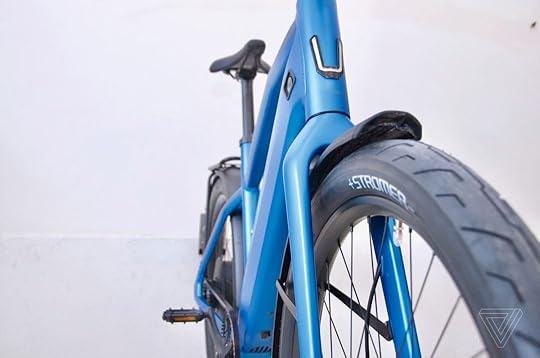 Big tires designed by Pirelli provide sure footing.
Big tires designed by Pirelli provide sure footing.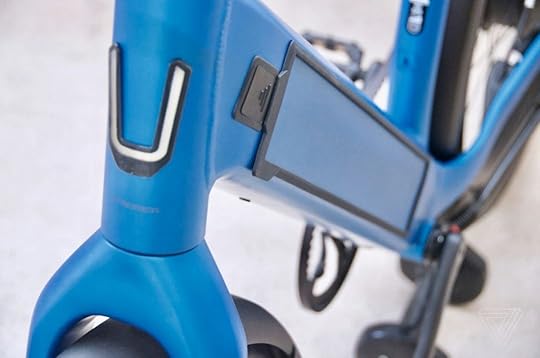 Battery is removable for easy charging.
Battery is removable for easy charging. EU requires moped license, registration, and liability insurance.
EU requires moped license, registration, and liability insurance.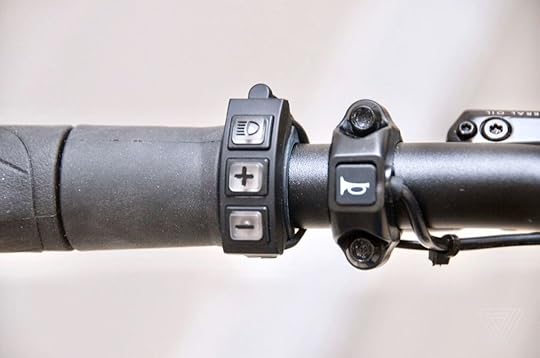 Power, light, and horn within easy access.
Power, light, and horn within easy access.My ST2 with the large-sized sport frame options came standard with fenders, a kickstand, and a mini rack; it did not come with the optional front and rear suspension. It weighs just shy of 33 kgs (72 pounds), which is undeniably heavy for an e-bike. But that mass makes the ride feel rock solid at top speed, without any worrisome wobble or flex when riding over bumps.
Safety is also boosted by custom front and rear hydraulic disc brakes, an electric horn, daytime running lights, and a Roxim Z4E Pro headlight that can produce between 600 and 900 lumens at night. (A dazzling 1600-lumen option is available.) There’s also an integrated brake light around back. The required rearview mirror is useful to see overtaking motorists on roads, but it makes the bike quite wide. This resulted in a few slapped car mirrors before I got a feel for the added width. Fortunately, the mirror folds to make it a bit easier to walk the bike through narrow hallways.
The keyless battery makes a pleasant “thunk” when ejected after a touchscreen and button combo.My ST2 review bike came fitted with a 48V, 618Wh removable battery rated for up to 120 km or 75 miles, though I’d estimate real-world range for an aggressive rider like me is about half that. I managed just shy of 50 km (31 miles) with 10 percent charge remaining, according to the Stromer app, before deciding to top up. The ST2 has a customizable regenerative braking feature to make the most of the battery. That flat terrain I tested on didn’t benefit from the extended range allowed by the recuperation that’s possible on long steep declines.
I did about half of my testing while illegally riding on bicycle lanes because responsible individuals can regulate their speed for the slower flow of congested city riding. If a powerful Ferrari can share city roads with slower Hyundais, then certainly a powerful e-bike can share a dedicated lane with traditional bicyclists. Putting the ST2 into low-power mode makes this easy. My riding was an even mix of max power (setting 3) at max speed (up to 47 km/h, according to the integrated display) when commuting outside the city center, and lazy 20 to 30 km/h jaunts at low power (setting 1) around town. A beefier battery with a stated range of up to 180 km (110 miles) is also available.
The + and – buttons on the left grip make it easy to toggle between the three power modes, while the right grip is home to the shifter. The excellent 5-Speed Sturmey Archer shifter is smooth and reliable and conveniently works from a standstill.
The display washes out even on an overcast day.","image_left":{"ratio":"*","original_url":"https://cdn.vox-cdn.com/uploads/choru... 

The touchscreen display integrated into the top tube is the interface to a bike OS that’s overwrought, in my opinion, though some might like having access to every configuration option (and there are a lot) right on the bike. I do not, especially not when all that overhead makes the bike take 20 seconds just to boot, an eternity if you’re in a hurry. My bike was also configured to boot into a lock screen that was frustratingly slow to respond to the five taps required to enter my secret passcode. The display also easily washes out in sunlight.
In my experience, it’s rare to make any changes once a bike is set up to your liking, meaning it’s best to offload more advanced features to an app. I prefer simple displays that boot fast and serve as a simple dashboard for basics like power setting and battery remaining. Stromer’s app is already very complete, offering lots of ride statistics and bike diagnostics in addition to options to tune the ride to your preferred balance of speed, torque, and agility. (I rode exclusively with the default “standard” setting.) The Stromer OMNI app is one of the best e-bike apps I’ve used.
The ST2 is as high-tech as they come, fitted with Bluetooth to auto-lock / unlock the bike when in range, GPS tracking, and 3G data for over-the-air software updates. An anti-theft mode shuts off the motor and starts blaring the horn to scare off thieves.
S-pedelecs can nearly reach the 50 km/h speed limit of most European cities, which is why they’re often pitched as true car replacements. Traditional e-bikes can already replace car commutes for many, but their top speed of 25 km/h means you’ll have to accept an extended travel time (while getting outside for some exercise). To test this theory, I “raced” a friend to a golf course to the north of Amsterdam; he in his new Tesla Model 3, me on the Stromer ST2 with a six-club pencil bag slung over my shoulder. His 30-minute trip took me just 27 minutes, and I had to wait 5 minutes for a ferry to arrive. Technically, I cheated by occasionally riding at top speed on deserted bike lanes I wasn’t allowed to use… but should have been.
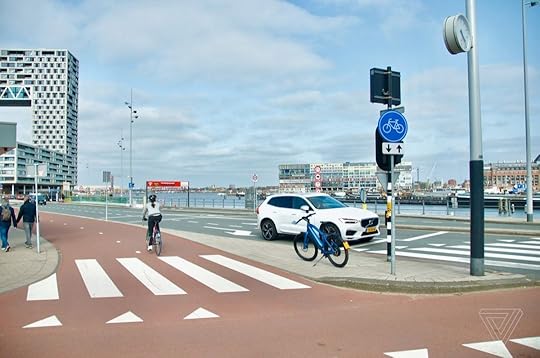 Speed pedelecs are forbidden on Dutch bike lanes like the one above and must share roads with cars instead.
Speed pedelecs are forbidden on Dutch bike lanes like the one above and must share roads with cars instead.Now, about EU directive 168/2013. As the name implies, it was conceived years before it was fully enacted on January 1st, 2017, which is part of the problem. It failed to anticipate the explosion of electric personal mobility devices we’ve seen over the last four years, especially in countries like the Netherlands where half of all new bicycles sold last year were electric. The directive splits e-bikes into two categories of “type approvals”: type L1e-A includes electric cargo bikes like the Carqon, while type L1e-B includes s-pedelecs like the Stromer ST2 and gasoline-powered mopeds. Any e-bike maxing out at 25 km/h and 250 watts of continuous power is exempt from the directive and treated exactly like a regular bicycle.
Type L1e-B vehicles are limited to a maximum speed of 45 km/h and maximum continuous rated power of 4,000 watts. It requires mopeds and s-pedelecs to be fitted with a rearview mirror, horn, brake light, and prominent license plate; while the owner must be at least 16 years of age, wear a moped-rated helmet, possess a moped (type AM) driver’s license, be covered by liability insurance, and pay to have the vehicle registered.
Critics like the European Light Electric Vehicle Advocacy group LEVA-EU argue that because it was designed primarily for mopeds with combustion engines, the current type L1e-B approval process is unnecessarily complex and burdensome for bike makers. S-pedelec manufacturers are required to comply with 1,036 pages of text, much of which is about moped safety and emission concerns that simply don’t apply to speed pedelecs. The result is higher costs passed onto consumers and curtailed adoption and innovation because… why would any company bother?
Because Europe is Europe, there’s often variance in how regulations are set into law in each member country. While I complain about s-pedelec access to bike paths in Amsterdam, at least some bike lanes still allow them, unlike other European countries. Conversely, Belgium gives owners the choice to ride their s-pedelecs on any bike path or any road with a maximum speed limit of 50 km/h. It’s policy is informed by an effusive in-country study from 2019:
The speed pedelec has the potential to be a sustainable alternative for cars with internal combustion engines for commuting purposes. For the Belgian case, commuting with a speed pedelec can solve problems regarding congestion and air pollution.
At the close of 2020, Stromer bikes registered in Belgium (4,061) were more than double that of my Dutch home (1,558), according to Bike Europe. And despite being the market leader for s-pedelecs throughout Europe, Stromer produced just 12,417 s-pedelecs in 2020, which is the same number of slow e-bikes Amsterdam-based VanMoof makes in a month. European S-pedelec demand is clearly being stifled.
So, what’s to be done?
The good news here is that the European Commission seems keen to address the regulations that currently govern e-bikes. In October, the EC asked TRL, a UK-based mobility researcher, to initiate a review of the EU’s type approval process required by EU directive 168/2013. TRL recently concluded its findings and recommended that s-pedelecs be moved out of the L1e-B moped category and into the far less restrictive L1e-A category. L1e-A type approvals currently cover 1,000-watt e-cargo bikes capped at 25 km/h and some vehicles with throttles.
It’s a positive sign but still “unfortunate” for s-pedelecs from the perspective of LEVA-EU. The advocacy group has been pushing for an entirely new set of vehicle regulations for zero-emission vehicles like e-bikes, standing scooters, and electric skateboards based upon weight and speed only, not maximum continuous power. LEVA-EU believes that vehicles with similar levels of kinetic energy should be subjected to similar rules. It would therefore distinguish between vehicles with a maximum speed of 25 or 30 km/h and those capable of 45 or 50 km/h, instead of trying to bend the current regulations dictated by Directive 168/2013 (and the related Machinery Directive) to the realities of modern transportation. While the TRL did recommend to “create a dedicated approval process for PMD [personal mobility devices] separate from Regulation (EU) No 168/2013 and the Machinery Directive,” it capped this at a max speed of either 25 or 30 km/h, thus excluding s-pedelecs from the PMD category.
The EC isn’t bound by TRL’s recommendations so we’ll have to wait until 2022 for it to reveal its legislative proposal. Even then, any proposal would have to be negotiated with the member states; a process that could go on for years before new legislation is enacted.
 The Stromer ST2 is also available in dark gray.
The Stromer ST2 is also available in dark gray.As much as I’d love to call for revolution and demand that urban commuters act on the moral obligation to disobey the unjust laws governing s-pedelecs in Europe, I can’t really apply the logic I used for a short-term review to long-term ownership — especially not with ST2 prices starting at $5,699 / EUR6,128.
If you’re in the US, then no problem. But anyone in Europe interested in owning the ST2 or any speed pedelec that falls under the current L1e-B type designation had better do their homework. Not only do you need to factor in local laws that might differ from EU rules, but also the costs to register and insure yourself for such a nascent and confusing transportation category.
The Stromer ST2 is easily the most sophisticated and thrilling e-bike I’ve ridden since I began reviewing the category back in 2016. It also did the rarest of things by letting me glimpse a better future that’s just out of reach.
S-pedelecs could help accelerate European initiatives to green our cities and reclaim all of that space allocated to idling cars. But that won’t happen until EU regulators first remove the barriers to adoption and then create incentives to get city-dwellers out of their cars, even the electric ones, and onto bikes like the Stromer ST2.
Photography by Thomas Ricker / The Verge
The post Stromer ST2 e-bike review: too hot for Europe, appeared first on NEWDAWN Blog.
Amazon adds blindingly obvious Kindle feature to make book covers your lockscreen,

Amazon Kindle owners can now set the lockscreen image to the cover of the book they’re reading. The long overdue Display Cover feature, first spotted by Engadget, was previously only available after jailbreaking your device (and a popular motivator to do so). Amazon says that it works with “most books, magazines, comics, and Manga.”
The Display Cover feature is only supported on some Kindle devices without ads. These devices include the Kindle (8th, 10th generation), Kindle Paperwhite (7th, 10th gen), Kindle Oasis (8th, 9th, 10th gen), and Kindle Voyage (7th gen). If you can’t recall which Kindle you have then click here to identify it. Promotions on ad-supported devices can be disabled for $20, or by calling into customer support and asking real nicely, according to many reports on redditkindle.
Supported Kindle devices running the latest firmware can activate the Display Cover feature by enabling the Show Cover option under Settings, Device Options. Just be sure whatever you’re reading is something you’re willing to advertise, m’kay weirdos?
The post Amazon adds blindingly obvious Kindle feature to make book covers your lockscreen, appeared first on NEWDAWN Blog.
GM and LG Chem will reportedly announce Tennessee battery factory on Friday,

On Friday, General Motors and LG Chem are expected to announce a new $2.3 billion battery factory to be located in Spring Hill, Tennessee, say reports from Nikkei, Reuters, and AP. It would be the second US battery joint venture for the American and South Korean giants, after the pair first announced a $2.3 billion battery cell manufacturing plant in Lordstown, Ohio back in 2019.
The Spring Hill batteries will be used for the Cadillac Lyriq electric SUV, say sources speaking to Reuters. GM already announced that Lyriq will be powered by GM’s new scalable battery architecture called Ultium. Batteries based on Ultium would offer power ranging from 50 to 200 kWh that could allow for a driving range of 400 miles or more. The Cadillac Lyriq will be assembled at a Spring Hill plant starting next year.
GM grew to be the largest automaker in North America on the back of combustion engines. Now it needs to ramp up production of electric vehicles in order to become a carbon neutral company by the year 2040, and meet its goal to halt sales of light-duty diesel and gasoline vehicles by 2035. Having a ready supply of batteries is therefore a fundamental concern for GM’s future. The company had already vowed to spend $27 billion on the development and production of 30 new electric vehicles by 2025 and even redesigned its logo to look more like an electrical plug.
The post GM and LG Chem will reportedly announce Tennessee battery factory on Friday, appeared first on NEWDAWN Blog.
April 15, 2021
NASA, SpaceX are ‘go’ to launch Crew-2 astronauts to space station on Earth Day, ,
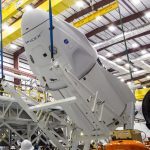
SpaceX and NASA are officially “go” to proceed with launching four astronauts to the International Space Station next week, with the completion of a critical flight readiness review on Thursday (April 15).
The post NASA, SpaceX are ‘go’ to launch Crew-2 astronauts to space station on Earth Day, , appeared first on NEWDAWN Blog.
Lyft launches health care transportation program, Nicole Wetsman
 Illustration by Alex Castro / The Verge
Illustration by Alex Castro / The VergeLyft launched a program that will let health care organizations send patients prepaid passes that they can use for rides to doctor’s appointments.
“We’ve automated an important piece of health access that allows patients to be self-sufficient and in control, while allowing our partners to focus on the services they provide, rather than on administrative processes,” said Megan Callahan, vice president of Lyft Healthcare, in a statement.
The program, called Lyft Pass for Healthcare, lets health care organizations or social services agencies create a budget and set approved pickup and drop-off locations. They can share the pass with patients, who can apply it to their ride.
Non-emergency medical transportation is estimated to be a $3…
The post Lyft launches health care transportation program, Nicole Wetsman appeared first on NEWDAWN Blog.
In an about-face, Xfinity Mobile will offer discounts on additional unlimited plan lines, Allison Johnson
 Xfinity Mobile offers cell service on Verizon’s network in addition to 20 million Wi-Fi hotspots across the country. | Image: Xfinity Mobile
Xfinity Mobile offers cell service on Verizon’s network in addition to 20 million Wi-Fi hotspots across the country. | Image: Xfinity MobileComcast’s wireless service, Xfinity Mobile, is changing the pricing structure on its unlimited plans. The company will now discount additional lines on its unlimited plan: a single-line plan will still cost $45 per month, but additional lines become cheaper the more you add. With four lines on a plan, you’ll pay $30 per month per line. That’s in contrast to a previous policy of charging the same fee per line, regardless of the number of lines on a plan — a practice touted on its website as recently as yesterday.
The company points out that its $45 per month unlimited plan is still cheaper than single-line plans among the major wireless carriers, which is true: postpaid unlimited plans from the big three cost between $60 and $70 per…
The post In an about-face, Xfinity Mobile will offer discounts on additional unlimited plan lines, Allison Johnson appeared first on NEWDAWN Blog.
Nvidia warns the great GPU shortage will continue throughout 2021, Tom Warren
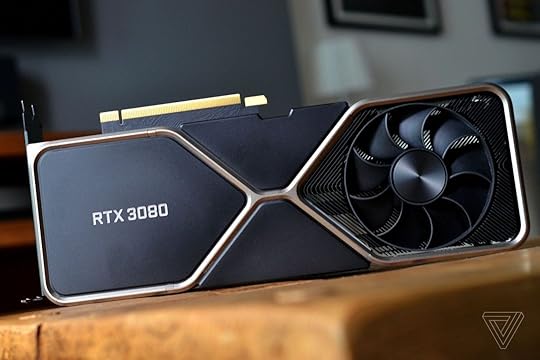 Photo by Tom Warren / The Verge
Photo by Tom Warren / The VergeIf you were hoping to pickup a new RTX 30-series GPU in the coming months, Nvidia is warning about supply shortages for the rest of 2021. “We expect demand to continue to exceed supply for much of this year,” said Colette Kress, Nvidia CFO, on an investors call earlier this week.
That means the difficulties of finding a new 30-series GPU will likely continue, possibly into 2022. Nvidia previously warned that supplies would “likely remain lean” through its fiscal Q1, and now that we’re approaching that milestone (end of April) it’s clear that supply hasn’t improved significantly to meet demand.
TSMC and Intel are also both warning that chip supply issues could last through 2022. The global chip shortage has forced some car manufacturers…
The post Nvidia warns the great GPU shortage will continue throughout 2021, Tom Warren appeared first on NEWDAWN Blog.
On This Day in Space! April 15, 2005: NASA spacecraft collides with satellite, ,
On April 15, 2005, NASA launched a spacecraft on a mission to rendezvous with a small communications satellite. The launch went according to plan, but the mission ended abruptly when the spacecraft collided with the satellite.
The mission was known as DART, which is short for Demonstration for Autonomous Rendezvous Technology. Its objective was to demonstrate that a fully automated and uncrewed spacecraft could rendezvous with another spacecraft in orbit. But the two spacecraft were not supposed to make contact.
[image error]
DART pulls up to Multiple beam Beyond Line-of-sight Communications (MUBLCOM) satellite. Built to test automated rendezvous technology, DART expertise should also prove helpful in latching rocket motor to Hubble Space Telescope as part of de-orbiting plan for the huge observatory. (Image credit: OSC)When DART approached its target, it ran out of fuel and inadvertently bumped into it. Investigators determined that DART’s thrusters had been firing excessively because of a problem with its navigation system. It was a soft collision, and neither of the spacecraft were noticeably damaged.
Catch up on our entire “On This Day In Space” series on YouTube with this playlist.
[image error]
History of NASA: $22.99 at Magazines Direct
Discover the story of how and why NASA was created, its greatest triumphs, darkest days, and of the times it exceeded all possible hopes. A tale of adventure, heroism and resourcefulness, learn of the space agency’s greatest achievements and how — over six decades — the organization has consistently and tirelessly devoted itself to its founding principle: that “activities in space should be devoted to peaceful purposes for the benefit of all humankind”. View Deal
Still not enough space? Don’t forget to check out our Space Image of the Day, and on the weekends our Best Space Photos and Top Space News Stories of the week.
Email Hanneke Weitering at hweitering@space.com or follow her @hannekescience. Follow us @Spacedotcom and on Facebook.
Join our Space Forums to keep talking space on the latest missions, night sky and more! And if you have a news tip, correction or comment, let us know at: community@space.com.
The post On This Day in Space! April 15, 2005: NASA spacecraft collides with satellite, , appeared first on NEWDAWN Blog.



